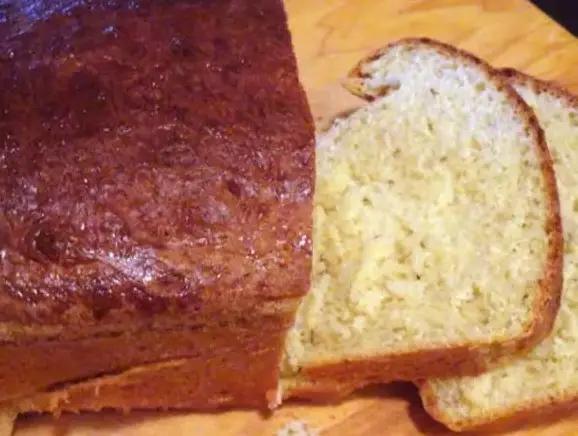Prepare to immerse yourself in a timeless tradition with a recipe that captures the essence of Easter in every bite – Italian Anise Easter Bread. This delightful confection, enriched with fragrant anise seeds and a hint of sweetness, is a staple on Easter tables across Italy and beyond. With its soft, pillowy texture and irresistible aroma, it’s sure to become a cherished favorite in your family for years to come. So, let’s roll up our sleeves, gather our ingredients, and embark on this delicious journey together!
Ingredients
- 2 packages active dry yeast
- 1/2 cup warm water
- 1/2 cup warm milk
- 1 cup softened butter
- 4 eggs
- 3/4 cup sugar
- 1 teaspoon salt
- 1 1/2 tablespoons whole anise seeds
- 6-7 cups all-purpose flour
- 1 egg for wash
Instructions
- Activate Yeast: In a small bowl, dissolve the yeast in warm water and let it sit for about 5 minutes until foamy.
- Mix Dough: In a large mixing bowl, combine the activated yeast mixture with warm milk, softened butter, eggs, sugar, salt, and whole anise seeds. Mix well.
- Incorporate Flour: Gradually add the all-purpose flour, one cup at a time, stirring until a soft dough forms. You may need to adjust the amount of flour depending on the humidity of your kitchen.
- Knead Dough: Turn the dough out onto a floured surface and knead for about 8-10 minutes, or until the dough is smooth and elastic.
- Rise: Place the dough in a greased bowl, cover it with a clean kitchen towel, and let it rise in a warm, draft-free place for about 1-2 hours, or until doubled in size.
- Shape: Punch down the risen dough and divide it into equal portions. Shape each portion into a braid or round loaf, depending on your preference.
- Second Rise: Place the shaped loaves on a baking sheet lined with parchment paper, cover them with a clean kitchen towel, and let them rise for another 30-45 minutes.
- Preheat and Egg Wash: Preheat your oven to 350°F (175°C). Beat the remaining egg and brush it over the risen loaves for a shiny finish.
- Bake: Bake the loaves in the preheated oven for 25-30 minutes, or until golden brown and hollow-sounding when tapped on the bottom.
- Cool and Enjoy: Allow the Italian Anise Easter Bread to cool on a wire rack before slicing and serving. Enjoy the aroma and taste of this delightful Easter treat!
Cook Notes and Variations
- Glaze: For added sweetness, you can drizzle the cooled bread with a simple glaze made from powdered sugar and milk.
- Citrus Zest: Enhance the flavor of the bread by adding grated orange or lemon zest to the dough.
- Almond Extract: Substitute almond extract for vanilla extract for a nutty twist to the flavor profile.
Keto and Low Carb Versions
While it’s challenging to replicate the exact texture and taste of traditional Italian Anise Easter Bread in a keto or low-carb version, here are some modifications you can try:
- Almond Flour: Substitute almond flour or a combination of almond flour and coconut flour for all-purpose flour to reduce the carb content.
- Sugar Substitute: Use keto-friendly sweeteners such as erythritol or stevia in place of sugar.
- Anise Extract: Replace whole anise seeds with anise extract for a concentrated flavor without the added carbs.
Frequently Asked Questions (FAQs)
Q: Can I use instant yeast instead of active dry yeast? A: Yes, you can use instant yeast in place of active dry yeast. However, you may need to adjust the rising time accordingly, as instant yeast typically requires less time to rise.
Q: Can I make this bread ahead of time? A: Yes, you can prepare the dough ahead of time, shape it into loaves, and refrigerate them overnight. Just let the loaves come to room temperature and rise for about 30 minutes before baking.
Q: Can I freeze leftover bread? A: Absolutely! Once cooled, wrap the bread tightly in plastic wrap or aluminum foil and place it in a freezer bag or container. Thaw at room temperature when ready to enjoy.
Q: Can I omit the anise seeds from the recipe? A: While anise seeds contribute to the signature flavor of Italian Anise Easter Bread, you can omit them if you prefer. You can also substitute them with other spices or flavorings, such as cinnamon or cardamom.
Q: Can I make smaller individual rolls instead of loaves? A: Certainly! You can divide the dough into smaller portions and shape them into individual rolls for a different presentation. Just adjust the baking time accordingly.

In conclusion, Italian Anise Easter Bread is not just a delicious treat; it’s a symbol of tradition, family, and the joy of Easter celebrations. With its soft, fluffy texture, delicate anise flavor, and golden exterior, it’s a feast for both the eyes and the palate. Whether enjoyed fresh out of the oven with a cup of coffee or shared with loved ones around the Easter table, this bread is sure to bring warmth and happiness to any occasion. So, embrace the spirit of Easter and savor the delights of this timeless recipe with your nearest and dearest. Buona Pasqua (Happy Easter)!






